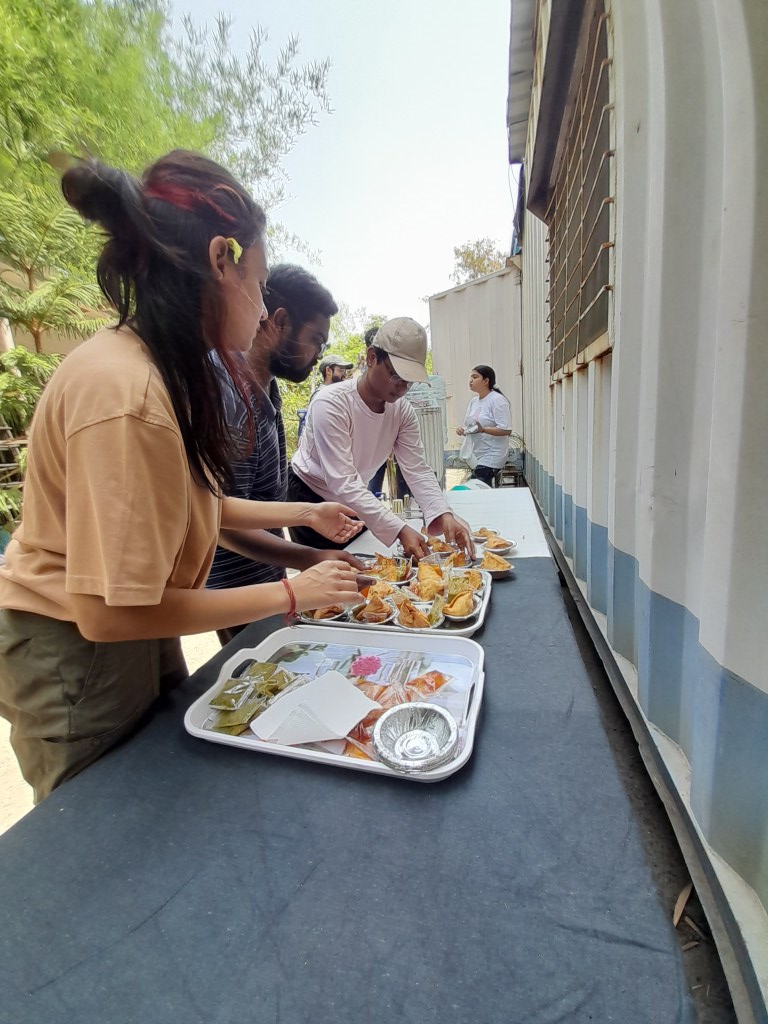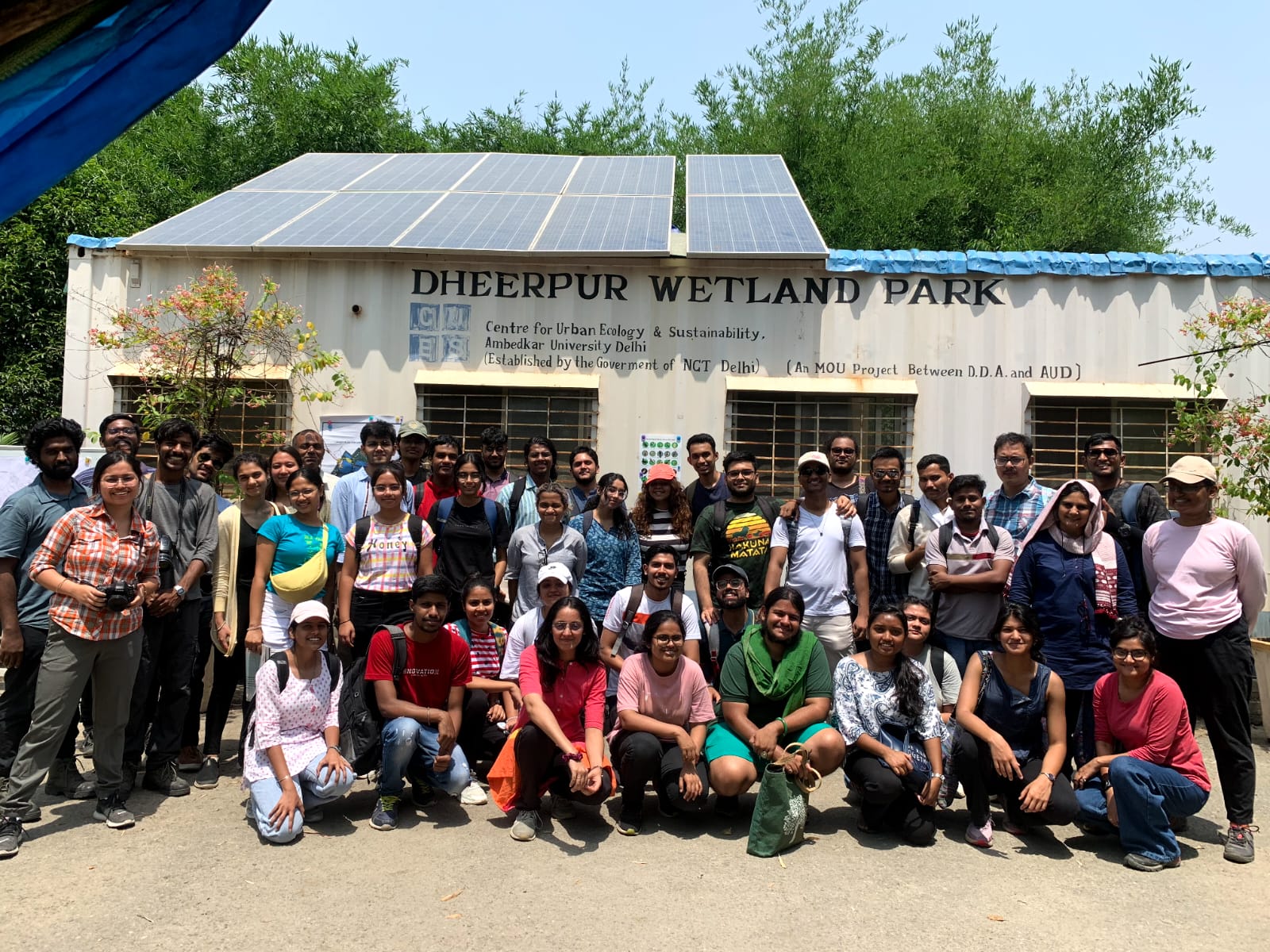Gunjana Boruah & Nirjesh Gautam
Millions of people worldwide engage in the popular hobby of birdwatching, commonly referred to as birding. It is an engaging hobby that enables people to get in touch with nature, appreciate it, and explore the complex world of avian diversity and behaviour.
Join us as we share our memorable birding experience with a group of eager undergraduate students who visited the Dheerpur Wetland Project Site (DWPS) on 19 May 2023, as part of a field trip organised by the Centre for Urban Ecology and Sustainability (CUES) for two undergraduate courses – Introduction to Human Ecology, and Nature and Society.
The group of students, accompanied by their course instructors, Dr. Budhaditya Das from the School of Human Ecology and Dr. Preeti Sampat from the School of Liberal Studies, gathered at the DWPS field station at around 7:30 am. After a brief introduction to the Dheerpur Wetland Restoration project by Prof. Suresh Babu, Director, CUES, the students were divided into two groups and were issued adequate binoculars. With field guides, notebooks and much eagerness, we thus departed on our much-awaited adventure.



As we ventured deeper into the site, the air was getting filled with the symphony of bird songs. As they listened to the melodic sounds and tried to pinpoint the origin of each distinctive call, the students’ eyes expanded in amazement. Each sighting became an exciting task that stimulated their wits and stoked their curiosity.
We encountered a beautiful tapestry of bird wonders throughout the morning, including red avadavat (Amandava amandava), red-whiskered bulbul (Pycnonotus jocosus), jungle babbler (Turdoides striata), common myna (Acridotheres tristis), bank myna (Acridotheres ginginianus), purple sunbird (Cinnyris asiaticus), ashy prinia (Prinia socialis), greater coucal (Centropus sinensis), yellow-footed green pigeon (Treron phoenicoptera), Eurasian collared dove (Streptopelia decaocto), Asian green bee-eater (Merops orientalis), red-wattled lapwing (Vanellus indicus) to name a few.



What seems more striking and inspiring is that all these bird sightings were possible right in the middle of a highly polluted urban setting. In the words of Prof. Babu, bats are pollinating flora amidst this crazy metropolitan!
As we marvelled at the aerobatic manoeuvres of the black kite (Milvus migrans), a student exclaimed, “How do we differentiate between a male and female bird? They all look the same apparently!” Dr. Budhaditya answered that in order to attract mates, most male birds typically exhibit bolder, brighter colours. Female birds tend to be duller and have less noticeable patterns, which helps them blend in easier while tending to a nest or protecting young birds, adds one of the Researchers at CUES.
To aid in bird identification, the students learnt to pay attention to minute features such as the shape of a beak, the pattern of feathers, the sounds they make and their behaviour.

A group of rose-ringed parakeets (Psittacula krameri), flapping their brightly coloured wings and energising the students with their presence, flitted through the treetops. The students’ excitement reached new heights when we spotted what looked like an escaped budgerigar (Melopsittacus undulatus), also known as the common parakeet or budgie! We were all left openly speculating as to whether the bird might survive in the wild and, if so, for how long.

The power of observation is one of the most rewarding features of birding. As we looked for well-camouflaged birds in the greenery, the students soon understood the value of patience and keen observational skills.

After wrapping up the birding session, students were encouraged to engage with the CUES team to learn more about the Dheerpur Wetland Restoration project. And meanwhile, in the background, PhD scholars and other volunteers were arranging the snacks and drinks.


And finally, with refreshments and some more conversations, the day was called off.
More opportunities for learning than just species identification was presented during today’s birding excursion. We talked about the complex relationships that exist between birds and their habitats, the concept of migration, and the significance of conservation. Later, Prof. Suresh Babu continued by describing the complexities of urban ecosystems and how nature is constantly attempting to respond to humans. Nature does not consciously respond to humans, but because of its adaptability, resilience, and interconnection, it can respond and adapt to the changes brought about by anthropogenic activities.

By exposing young minds to effective restoration initiatives and conservation efforts, we can not only encourage their curiosity but also instil a sense of responsibility to safeguard and conserve our vulnerable ecosystems. We hope that this birding activity serves as the spark that fires a passion for the environment that lasts a lifetime and encourages these young minds to explore, appreciate, and conserve the natural world around them.

